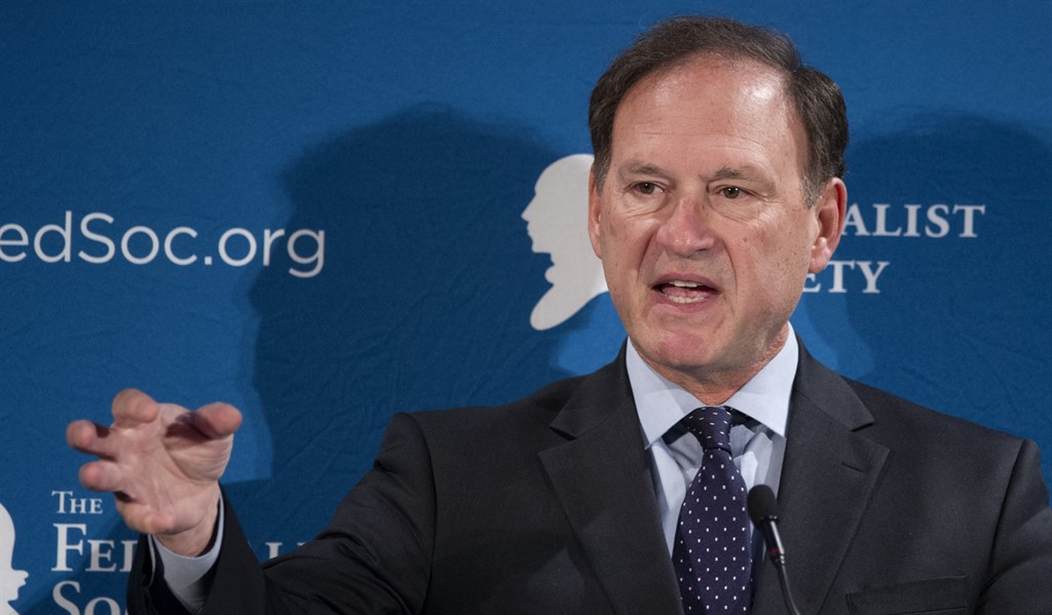In what will no doubt prove to be infuriating to liberals and most libertarians, the Supreme Court handed down a unanimous decision today which will provide a greater measure of safety and security to law enforcement officers. There has been a bit of precedent in our court system dating back to 2002 and springing from (where else?) the 9th circuit which came to be known as the provocation doctrine. Resulting from a 2002 lethal force case, the short version of the story is that the court ruled that an otherwise justified use of force by the police may still be deemed unlawful if they “provoked” the incident by acting in an illegal manner prior to the encounter with the suspect(s).
That case was used as precedent in another trial from 2010, County of Los Angeles v. Mendez, where police entered a residence without a warrant and wound up shooting (though not killing) two suspects. One of them was holding a realistic looking BB gun and the shooting was justifiable in terms of self-defense. But since they entered without a warrant, the provocation doctrine allowed them to be found liable for the shooting. The case was appealed, and as Damon Root explains at Reason, the Supremes have unanimously wiped the provocation doctrine off the books.
Writing today for a unanimous Supreme Court, Justice Samuel Alito overturned that 9th Circuit decision, dismantled the provocation doctrine, and ruled in favor of the officers. The provocation doctrine “is incompatible with our excessive force jurisprudence,” Justice Alito declared. “The rule’s fundamental flaw is that it uses another constitutional violation to manufacture an excessive force claim where one would not otherwise exist.” According to Alito, “there is no need to dress up every Fourth Amendment claim as an excessive force claim.”
The entire provocation doctrine argument has struck me as smelling suspiciously like the Fruit of the Poisonous Tree Doctrine, which I’ve railed against here repeatedly. Sometimes the specifics of how you arrived at a given situation in law enforcement scenarios should take a back seat to the reality officers are confronted with in the moment. In the Poisonous Tree scenarios, too often the obvious and undeniable evidence of a crime is tossed out allowing criminals who are clearly guilty to walk free if the evidence against them is gained by accident or through some process which didn’t dot all the i’s and cross all the t’s.
In those cases, while frustrating in the extreme, what you’re going to wind up losing is a judgement at trial. In this situation what you may wind up losing is an officer’s life. Despite how an officer arrives at a situation where a suspect convincingly demonstrates that they may be about to murder the law enforcement officer or others in the community, it’s too late to worry about going back for a warrant at that point. Split second decisions have to be made sometimes and such restrictions are either going to result in officers hesitating and getting shot or not pursuing a suspect to begin with if they fear they will be hung out to dry in court later over a technicality.
In Damon Root’s analysis he argues that Angel Mendez (one of the suspects who was shot and subsequently lost a leg), would still have the use of his right leg if the detectives had not disobeyed the Fourth Amendment because the police wouldn’t have had the opportunity to use any amount of force at all. That may be true, but they also probably wouldn’t have stopped or solved a crime. And in the heat of the moment, once the door was open, a suspect with a gun in his hand tends to overrule whatever pieces of paper the cop may have in his or hers. The fact that even the liberal justices agreed with this premise is a hopeful sign and should put this question to bed for generations.








Join the conversation as a VIP Member